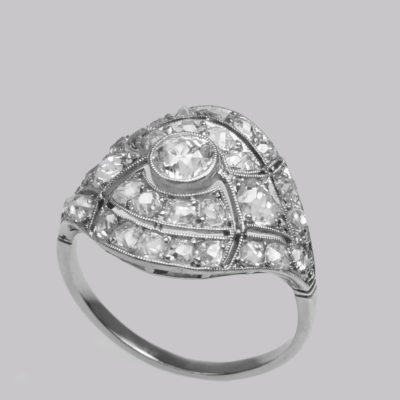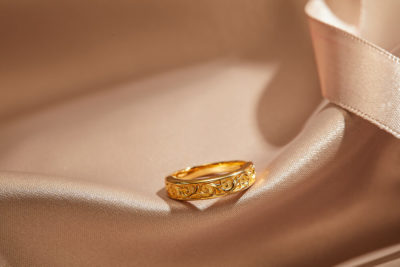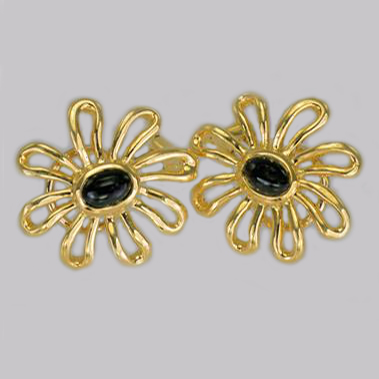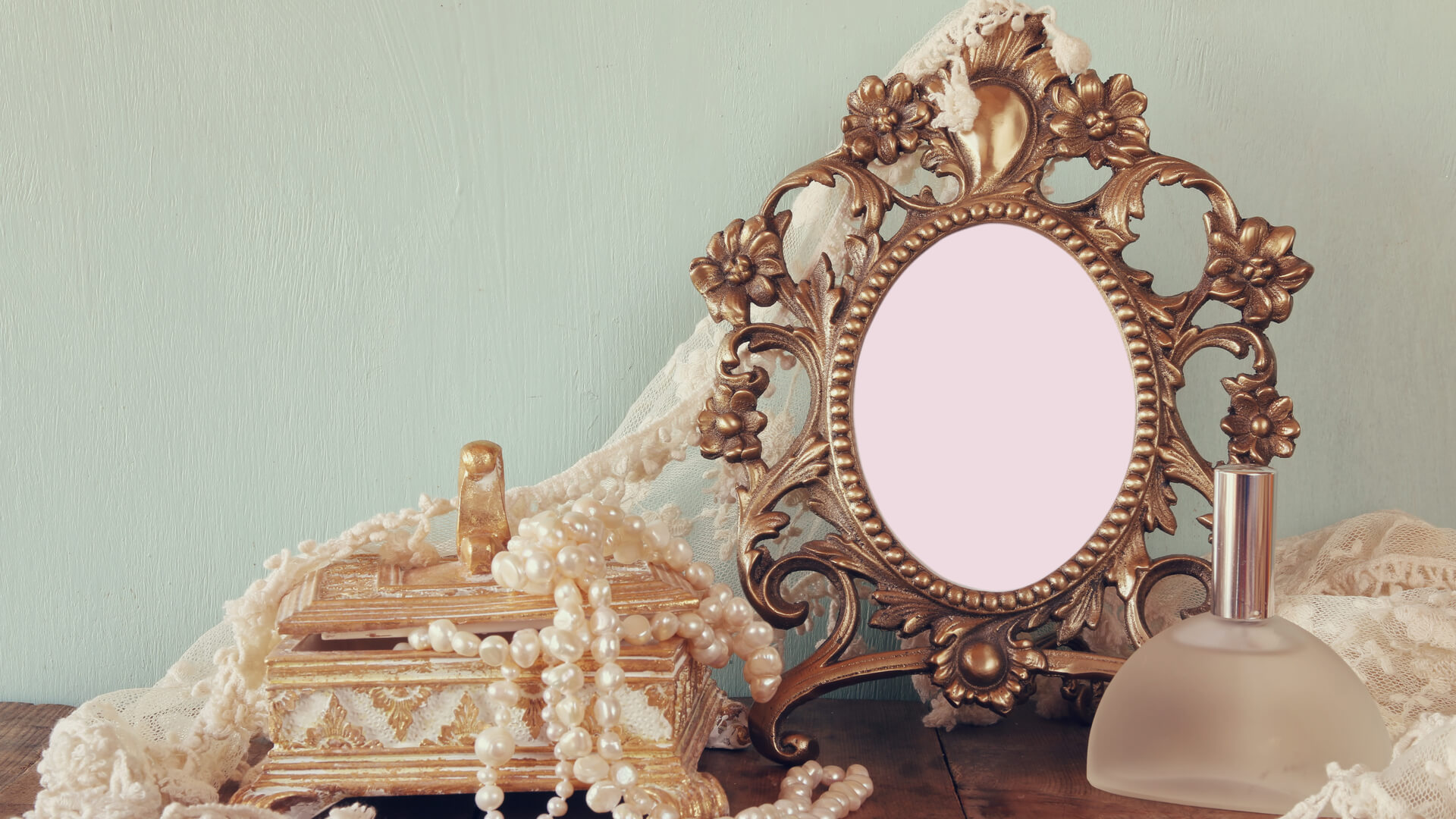
What is Victorian Style Jewellery?
Victorian era jewellery includes any pieces of jewellery that was produced during Queen Victoria’s reign, from 1837 until 1901 (or when she passed away). Throughout this time jewellers all over the world, but specifically in Europe, designed and created a wealth of stunning, intricate jewellery.
Due to their age and popularity, pieces of Victorian era jewellery are increasingly difficult to come by. As a result of its market rarity, it’s not always easy to identify authentic Victorian jewellery.
Victorian Era Jewellery History
Queen Victoria was known to have a love of jewellery and fashion. Her choices in these areas went on to influence women all over the world – both aristocratic and otherwise. The subsequent demand for stylish jewellery meant that increasingly more designers went into business, and in turn, jewellery became more accessible than ever.
During this era, international trade was becoming increasingly prevalent. Queen Victoria took over from the East India Company as Empress of India, and England had colonies in Canada, Australia, New Zealand, South America, and Africa. The growing British Empire meant that goods were easily traded across the globe. Goods often included precious stones such as diamonds, emeralds, rubies, and sapphires. The increased availability of gemstones during the era is evident in Victorian era jewellery, which often features precious gems.
When it comes to fashion and design culture, the Victoria era is often split into three periods. These include:
- The Romantic period (1837 – 1860)
- The Grand period (1861 – 1880)
- The Aesthetic period (1880 – 1901)
Each of these cover different themes in Queen Victoria’s life, which were often reflected in the jewellery produced during the time.
Victorian Jewellery Themes
The three different periods set the tone for the jewellery that Queen Victoria wore throughout her reign, and therefore defined the theme for jewellery created by designers.
The Romantic period
These years cover Queen Victoria’s courtship and marriage to Prince Albert. The jewellery of the time was generally very fluid, and featured romantic motifs such as hearts, bows, flowers, and birds.
The Grand period
This was a time of great loss for the Queen, as both her mother and Prince Albert died in 1861. Therefore, she wore jewellery symbolising mourning. It included dark stones such as onyx and fossilised coal and jet, pearls, and tear drop shapes.
The Aesthetic period
Jewellery made during this time was reflective of the ‘Belle Epoque’, or ‘Beautiful Age’. In broad terms it was bright, colourful, and full of optimism.
Victorian Jewellery Characteristics
There are several specific characteristics that can help a prospective buyer to identify Victorian era jewellery on the market.
Colourful gemstones
The ease of international trade meant that during the Victoria era jewellers had greater access to a wider variety of precious stones. The following were regularly used in pieces made at the time:
- Diamonds
- Emeralds
- Pearls
- Sapphires
- Rubies
- Garnet
- Topaz
- Amethyst
- Turquoise
It’s believed that Queen Victoria favoured colourful jewellery. One story recounts how she gifted her bridesmaids’ bird-shaped brooches that featured bright turquoise stones. An example of colourful Victorian jewellery is our Victorian Garnet & Emerald Ring, 1869.
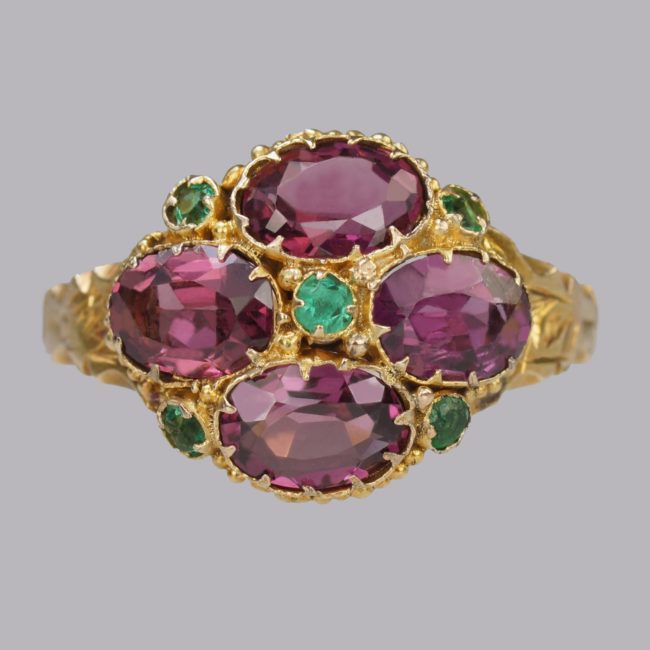
Shapes of diamond cut
While diamonds were rare and extremely valuable, discoveries in mines in South America and Africa meant that they were more available to those who could afford them. There were three main shapes of diamond cut during the Victorian age:
- Rose cut diamonds
- Old mine cut diamonds
- Old European cut diamonds
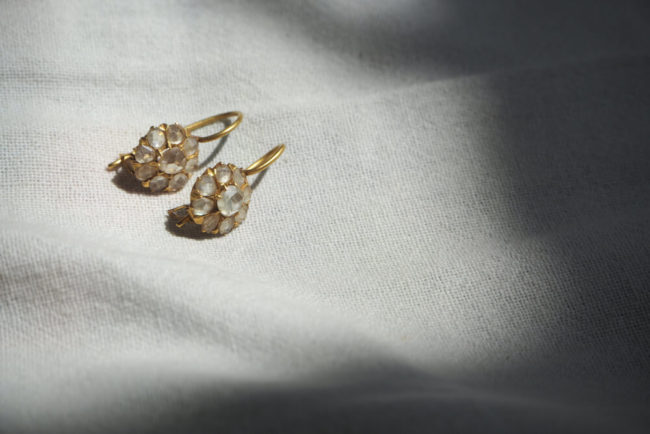
Symbols and imagery used throughout Victorian jewellery
One common Victorian-style jewellery characteristic is the use of symbols. Ornate flowers are found in many pieces, with different flowers all representing a unique meaning. Examples include lilies for beauty, and lilies of the valley for joy. Snakes were also frequently used, representing eternity, fertility, and protection. Some gemstones were used as symbols, such as garnets for loyalty and fidelity, and pearls for tears and mourning.
Natural imagery was a popular feature in all areas of Victorian design. Designers such as William Morris, who was a great influencer in the British Arts and Crafts Movement, popularised the use of flowers, trees, and birds in creative works.
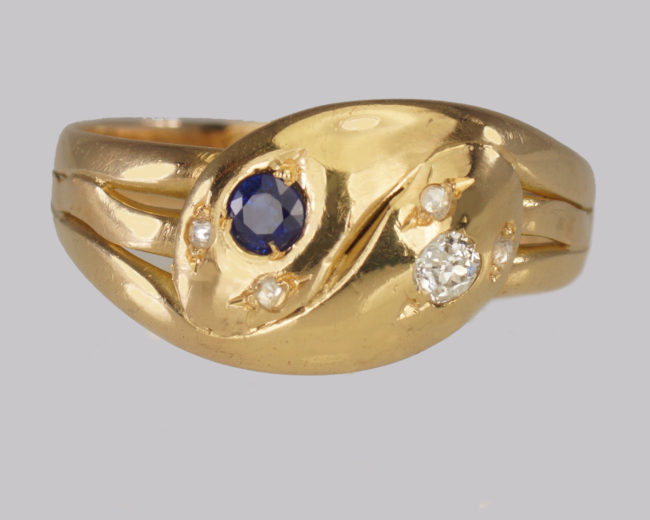
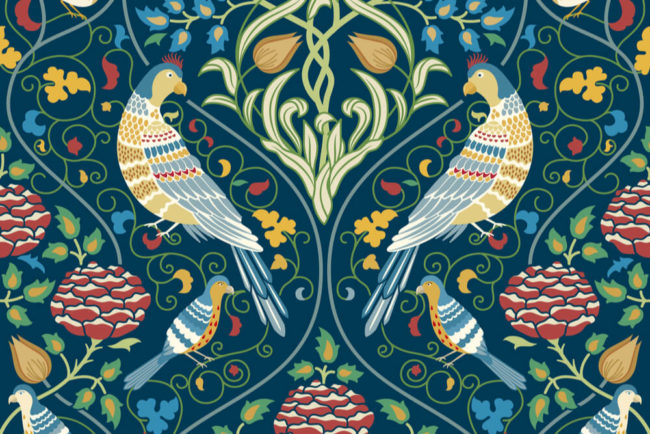
Materials Used in Victorian Era Jewellery
The developments in both international trade and mining technology are evident if you look closely at Victorian jewellery, and considering the materials many pieces are made from.
In addition to the increased availability of precious stones, gold was also much more prevalent during the Victorian period. This is because gold mines were being discovered all over the world, particularly in California and Australia in the middle of the 19th century.
During the Victorian age, jewellers began experimenting with gold, using both yellow and rose, and choosing to engrave it or decorate it with ornate filigree. 15 carat gold was mostly commonly used in Victorian age jewellery. However, this was discontinued in 1932 as part of the gold standard. This is, therefore, a useful method of dating gold jewellery if it’s 15 carats.
Silver was also commonly used, as was steel, because they were widely available at a modest price. Platinum, however, was very rarely used, and white gold was not available during the Victoria era.
Popular Victorian Jewellery Designers
Most notable jewellery of the Victorian era was created in Europe. Some well-known Victorian jewellery designers include:
- Kitching & Abud – founded in 1824 in London, Kitching & Abud were made ‘Jewellers to the Queen’ in 1837. Joseph Kitching famously collaborated with Prince Albert in 1840 to design a sapphire and diamond coronet for the Queen, as a wedding gift from her new husband.
- Cartier – founded in 1847 in Paris, during the Victorian age Cartier contributed well-loved ornate gold pieces to royalty and celebrities across the world. In fact, King Edward VII (Victoria’s eldest son) came to affectionately refer to Cartier as ‘the jeweller of Kings and the King of jewellers’, albeit after the Victorian era.
- Oscar Massin– this Parisian jeweller came to the fore in the 1860s when he began acquiring Royal commissions from across Europe. He produced a jewellery set for the Royal Court of Spain, a medallion set for King William III of The Netherlands, and what is now known as the Fife Tiara for The First Duke of Fife’s bride – who was granddaughter to Queen Victoria.
In the mid-to-late 19th century, Tiffany and Company – based in New York – came on the scene. After displaying their jewellery at various international exhibitions, and then introducing their diamond solitaire ring in 1886, Tiffany and Company quickly gained notoriety.
Typical Pieces of Victorian Jewellery
During the Victorian age, Queen Victoria made a range of jewellery pieces popular.
These included:
- Pendant earrings
- Choker-style necklaces
- Brooches
- Ornate, gold rings
- Thick, band-style bracelets
In the later stages of the Victorian era, updo hairstyles were in vogue for women. Because of this, pendant style earrings and elaborate broad – often choker-style – necklaces became more popular.
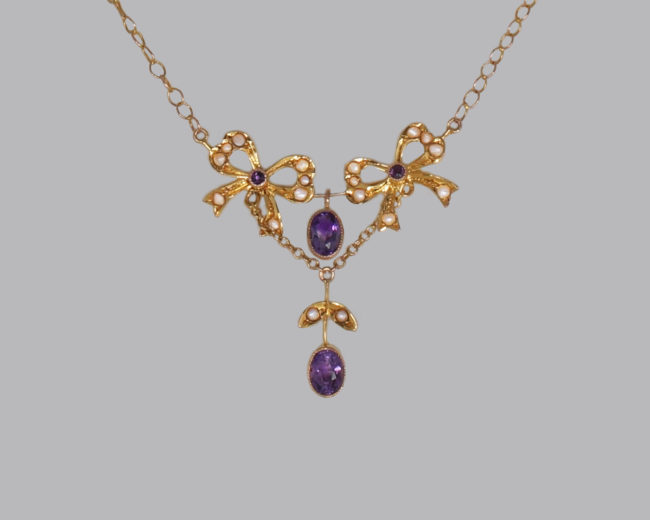
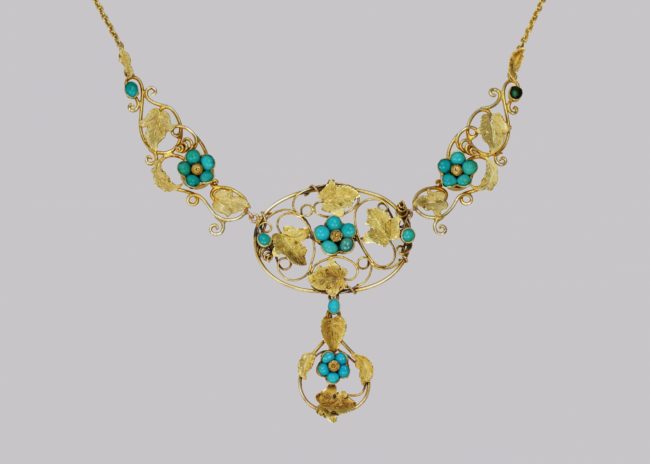
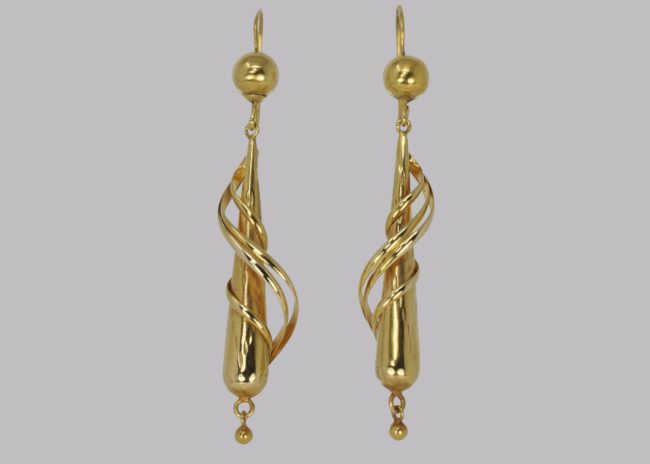
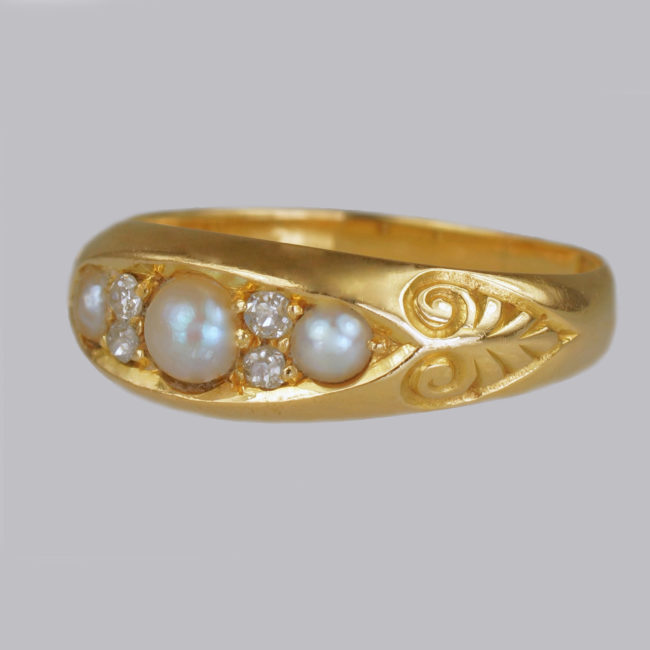
Pre Victorian-era Jewellery
Before Queen Victoria began her reign, the monarchs of The Georgian period had also lain claim to an era of ornate, finely crafted jewellery. Covering the years between 1714 to 1830, pieces produced during this time have their own unique characteristics and are, of course, increasingly rare today.
Read our Ultimate Buyer’s Guide to Georgian Jewellery to help you learn how to recognise and appreciate jewellery made in these years.
Post Victorian-era Jewellery
While many aspects of Victorian-style jewellery have lasted in popularity and can be seen to influence pieces made even today, the jewellers of the time continued evolving in style into the next period of history. King Edward VII took over from his mother as monarch when she passed away in 1901 and ushered in what’s known as the Edwardian era. Like Victorian jewellery, Edwardian era jewellery is also highly sought after and has its own special style.
For further advice regarding choosing antique or vintage jewellery, speak to the experts at The Chelsea Bijouterie. Or browse our collection for authentic, one of a kind historical pieces.


